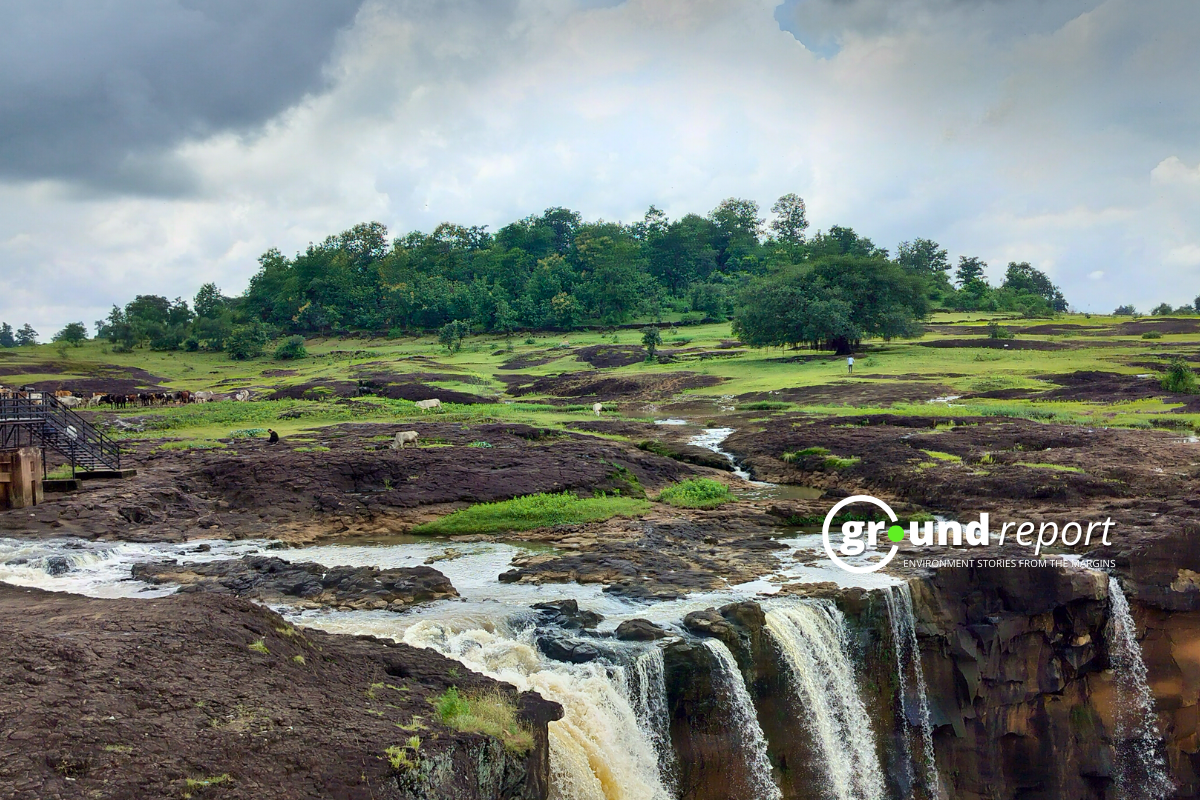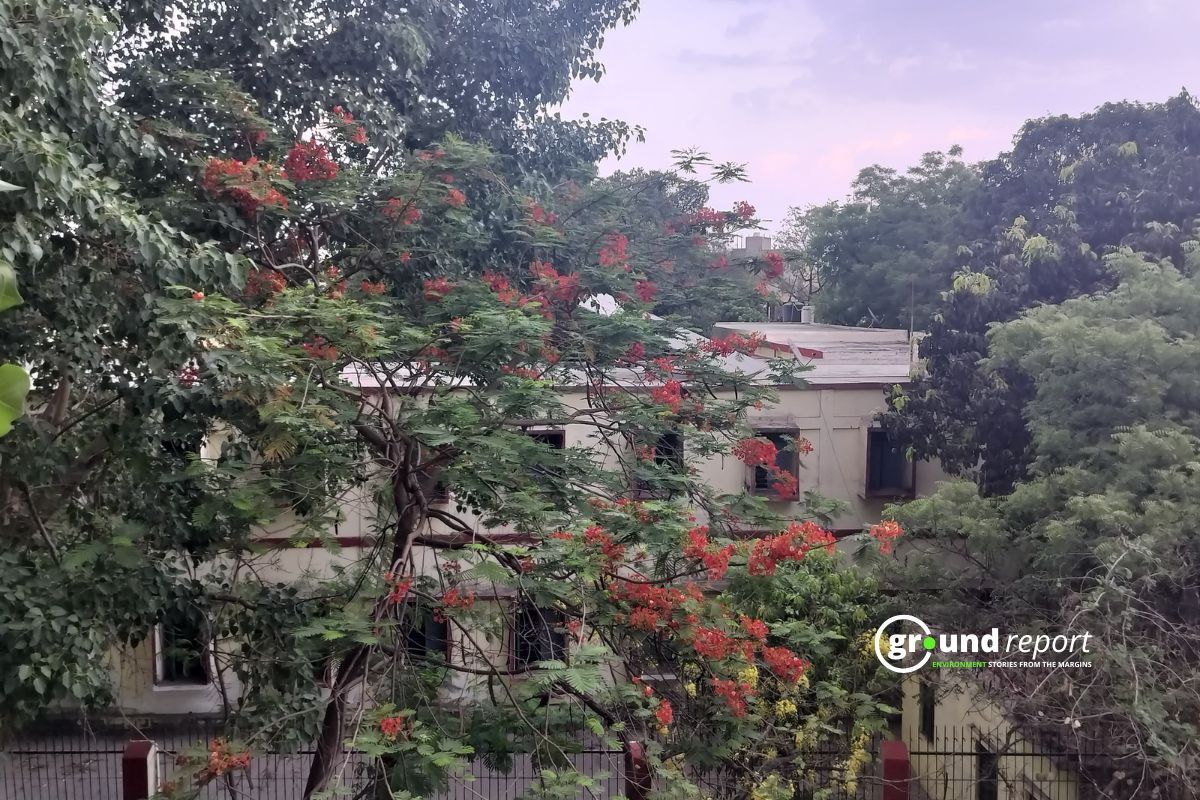At least 32 people have died, and over 24,000 have been relocated in Gujarat, India, after heavy rains caused massive flooding, officials said on Wednesday. Several rivers and reservoirs have breached their banks, with water levels exceeding danger marks.
The state is grappling with torrential rains, and the Saurashtra-Kutch region has been the hardest hit. The India Meteorological Department (IMD) warned that the deep depression over the region is expected to intensify into Cyclone Asna. The storm, predicted to make landfall on Friday, could exacerbate the ongoing flooding crisis.
The death toll in Gujarat from rain-related incidents rose to 28 as downpours submerged vast areas. Over 17,800 people have been evacuated from flood-affected regions, and Gujarat’s Health Minister, Rushikesh Patel, reported over 12,000 rescues in Vadodara as of August 28.
#Gujarat : भारी बारिश से प्रभावित इलाकों में मदद के लिए पहुंचे कच्छ बॉर्डर रेंज IG चिराग कोरडिया, IPS , स्थिति का जायजा लेकर सीमावर्ती इलाके में राहत बचाव कार्य शुरू करवाया।@sanghaviharsh @GujaratPolice 🫡 pic.twitter.com/2tZ6PJ4qsZ
— Kaushik Kanthecha (@Kaushikdd) August 30, 2024
Prime Minister Narendra Modi spoke with Gujarat Chief Minister Bhupendra Patel. “The Prime Minister has provided guidance on rescue operations, public health, and sanitation in flood-affected areas,” CM Patel said.
Severe weather warnings and flooding
The IMD has issued a red alert for the entire state, with extreme weather predicted in the next few days. Heavy rains are expected across all districts, particularly in Saurashtra and Kutch, which have seen a dramatic increase in rainfall recently.
On August 26, Gujarat had 17% excess monsoon rainfall; by August 29, it surged to 48%. In Saurashtra and Kutch, the increase was more severe. On August 26, these regions reported 28% excess rainfall, skyrocketing to 86% by August 29. This 58-point rise caused widespread flooding and devastation, particularly in low-lying areas.
The Gujarat government has called in six columns of the Indian Army for urgent relief operations. The National Disaster Response Force (NDRF) has been deployed to rescue residents from floodwaters. In the last two days, the NDRF has rescued 95 people, and many more are expected to be relocated as water levels continue to rise.
जामनगर – द्वारका हाईवे पर रेस्क्यू ओपरेशन
बारिश के पानी मे फसे दो लोगो का पुलीसने रेस्क्यू कीया #HeavyRainfall #Gujarat #GujaratFlood #Jamnagar #rescue pic.twitter.com/cENekIOaju
— Yuvrajsinh Jadeja (@YAJadeja) August 28, 2024
Gujarat has received 105% of its average annual rainfall this year, according to the State Emergency Operations Centre (SEOC). Several Saurashtra districts, including Devbhumi Dwarka, Jamnagar, Porbandar, and Rajkot, have reported very heavy rainfall in the last 24 hours, causing significant damage to infrastructure and agriculture.
Formation of Cyclone Asna
As Gujarat battles floods, the IMD indicated the deep depression over Saurashtra and Kutch may strengthen into a cyclonic storm by Friday evening. Once formed, it will be named ‘Cyclone Asna,’ proposed by Pakistan. The storm is predicted to move west-southwestward and could emerge into the Arabian Sea near Pakistan’s coast.
Cyclones in the Arabian Sea during August are rare, with only three occurrences in the last 80 years (1944, 1964, and 1976). If Cyclone Asna forms, it will be the fourth such event in August in eight decades.
The current system’s uniqueness lies in its land origin. Initially forming as a depression over the Bay of Bengal, it crossed the country and intensified as it reached the sea. The monsoon winds, combined with moisture from the Arabian Sea and soil moisture, likely contribute to the storm’s rapid intensification.
Since June 1, India has recorded 7% excess rainfall, with central India at 17% surplus, northwest India 2% excess, and Peninsular India 18% excess. However, east and northeast India reported an 11% deficiency.
The IMD has forecast more severe rainfall for Gujarat and nearby regions. The weather agency issued warnings for the next seven days, cautioning of extremely heavy rainfall across Saurashtra, Kutch, and other parts of the state. Rainfall is also expected in South Gujarat, Daman, Diu, and Dadra & Nagar Haveli.
Authorities are monitoring the situation as the deep depression strengthens into Cyclone Asna. Efforts are underway to minimize the storm’s impact, with emergency teams on standby and residents evacuating from vulnerable areas.
The Gujarat government urged citizens to stay vigilant and follow safety protocols as the state braces for extreme weather. With over 32 dead and thousands displaced, the people of Gujarat face a daunting battle against nature’s fury.
Weather Warnings
-
Day 1 (August 29): Heavy rainfall expected in Saurashtra-Kutch.
-
Day 2 (August 30): Cyclonic conditions likely with heavy rainfall across Gujarat.
-
Day 3-7 (August 31-September 4): Continued heavy rainfall in Gujarat and nearby regions, with risks of flash floods and further inundation.
Local authorities, disaster response teams, and the IMD will monitor the evolving situation as Cyclone Asna nears landfall. The state government has urged residents in affected areas to cooperate with emergency services and adhere to weather advisories for their safety.
Red alert warning in following Districts
| Districts | Impact |
|---|---|
| Patan, Ahmedabad, Anand, Surat, Dang, Navsari, Valsad, Tapi, Daman, Dadra Nagar Haveli, Surendranagar, Rajkot, Jamnagar, Porbandar, Junagadh, Amreli, Bhavnagar, Morbi, Dwarka, Gir Somnath, Botad, Kutch, Diu | Impact Details |
| Severe Waterlogging | Most city routes are closed due to severe waterlogging. |
| Flooding in Low-Lying Areas | Widespread waterlogging and flooding in low-lying areas, causing heavy traffic jams. |
| Lightning Strikes | High probability of fatalities from lightning strikes. |
| Slum Areas at Risk | Slum areas near railway tracks, rivers, and drains are at severe risk. |
| Riverine Flooding | Potential riverine flooding in the Purna, Ambika, and Par rivers and their catchment areas. |
| Disruption to Municipal Services | Localized short-term disruption to municipal services, including water and electricity. |
| Risk to Old Buildings | High risk to very old and unmaintained buildings. |
| Falling Trees and Hoardings | Falling trees, branches, and advertising hoardings in gusty winds. |
| Agricultural Damage | Extensive damage to horticulture, plantations, and Kharif crops like rice, maize, pearl millet, black gram, banana, saffota, and mango, particularly in city outskirts. |
| Drainage Clogging | Clogging of drains due to debris flows. |
| Solar Energy Disruption | Severe disruption to solar energy output. |
| Agricultural and Livelihood Impact | Significant agricultural impact, including loss of livestock and crops due to flooding and soil erosion, affecting the economy and livelihoods. |
| Flash Flooding | Life-threatening flash flooding in vulnerable areas. |
| Landslide Risk | Landslide risk in Saputara hill area, causing road closures and potential casualties. |
| Fisheries Impact | Fisheries activities may be severely hampered. |
Orange alert warning
| Districts | Impact |
|---|---|
| Gandhinagar, Banaskantha, Kheda, Panchmahal, Vadodara, Chhota Udepur, Narmada, Bharuch, Surat, Dang, Tapi, Navsari, Valsad, Daman, Dadra Nagar Haveli, Surendranagar, Rajkot, Jamnagar, Porbandar, Junagadh, Amreli, Bhavnagar, Morbi, Dwarka, Gir Somnath, Botad, Kutch, Diu | Impact Details |
| Waterlogging and Flooding | Waterlogging and flooding in low-lying areas, causing heavy traffic jams. |
| Drain Overflow | Drain water overflow in various city areas. |
| Damage to Vulnerable Structures | Probability of damage to vulnerable structures and houses. |
| Risk to Old Buildings | Risk to old and unmaintained buildings. |
| Falling Trees and Hoardings | Falling trees, branches, and advertising hoardings in gusty winds. |
| Drain Clogging | Significant drain clogging due to debris flows in drainage areas. |
| Solar Energy Disruption | Significant disruption to solar energy output. |
| Agricultural Impact | Impact on agriculture, including securing livestock and moving small animals to shelter; some crop loss in flood-prone or soil erosion areas. |
| Flash Flooding | Possible life-threatening flash flooding in vulnerable areas. |
| Coastal Inundation | Inundation of coastal areas coinciding with high tides, squally weather, and rough sea conditions during a cyclone. |
| Landslide Risk | Landslide risk in Saputara hill area, causing road closures and potential casualties. |
| Fisheries Impact | Fisheries activities may be hampered. |
Yellow Color alert
| Districts | Impact |
|---|---|
| Mehsana, Sabarkantha, Aravalli, Mahisagar, Banaskantha, Patan, Gandhinagar, Kheda, Ahmedabad, Anand, Panchmahal, Dahod, Vadodara, Chhota Udepur, Narmada, Bharuch, Surat, Dang, Tapi, Navsari, Valsad, Daman, Dadra Nagar Haveli | Impact Details |
| Kuchcha Road Damage | Major damage to kuchcha roads due to flooding. |
| Traffic Disruption | Significant city traffic disruption. |
| Inundation of Low-lying Areas | Inundation of low-lying areas damaging kuchcha houses. |
| Waterlogging in Underpasses | Waterlogging in city underpasses. |
| Reduced Visibility | Sudden visibility reduction during heavy downpours increases road accident risk. |
| Waterlogging near Wetlands | Waterlogging problems mainly found near wetlands and marshy lands in urban and rural areas. |
Support us to keep independent environmental journalism alive in India.
Keep Reading
The costliest water from Narmada is putting a financial burden on Indore
Indore’s Ramsar site Sirpur has an STP constructed almost on the lake
Indore Reviving Historic Lakes to Combat Water Crisis, Hurdles Remain
Indore’s residential society saves Rs 5 lakh a month, through rainwater harvesting
Follow Ground Report on X, Instagram and Facebook for environmental and underreported stories from the margins. Give us feedback on our email id greport2018@gmail.com.
Don’t forget to Subscribe to our weekly newsletter, Join our community on WhatsApp, and Follow our YouTube Channel for video stories.






